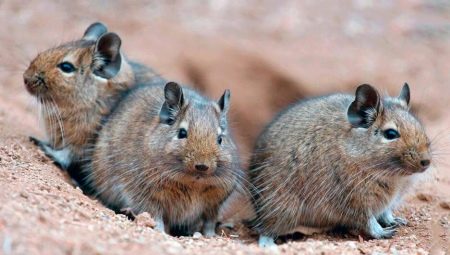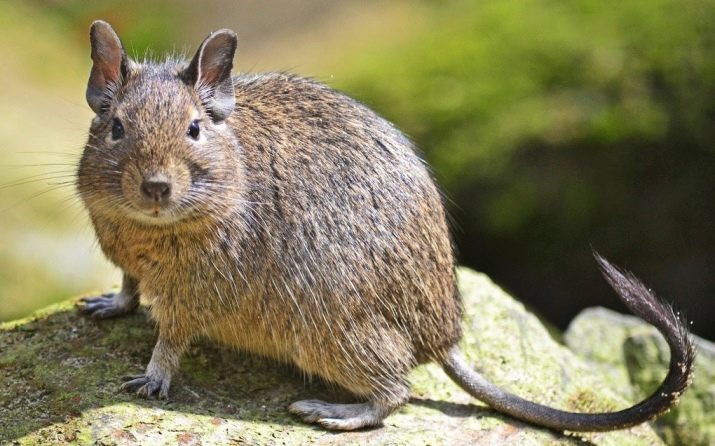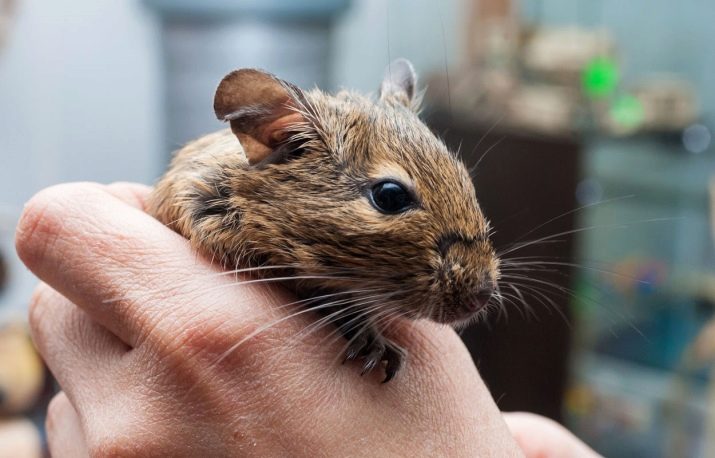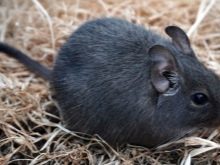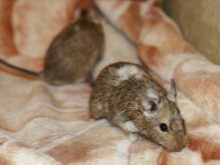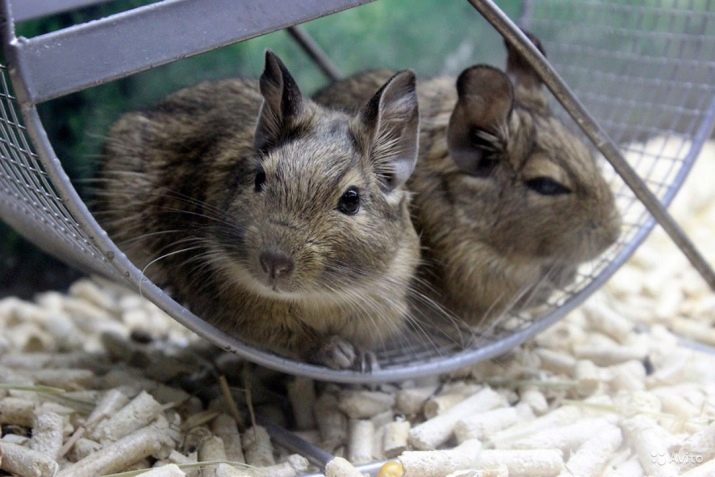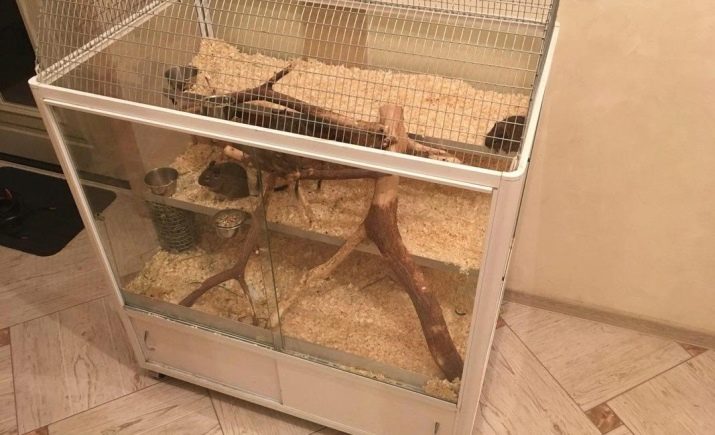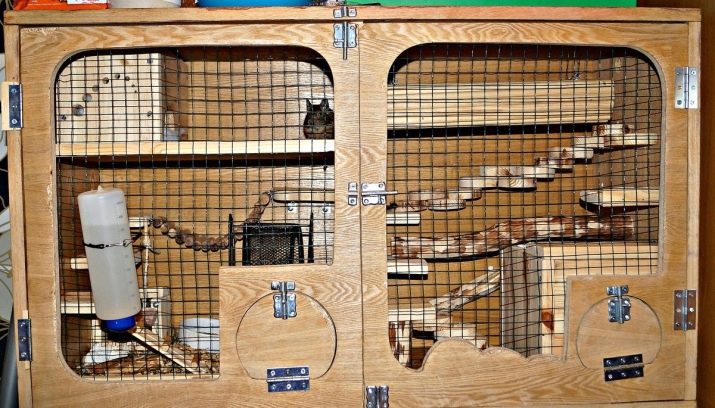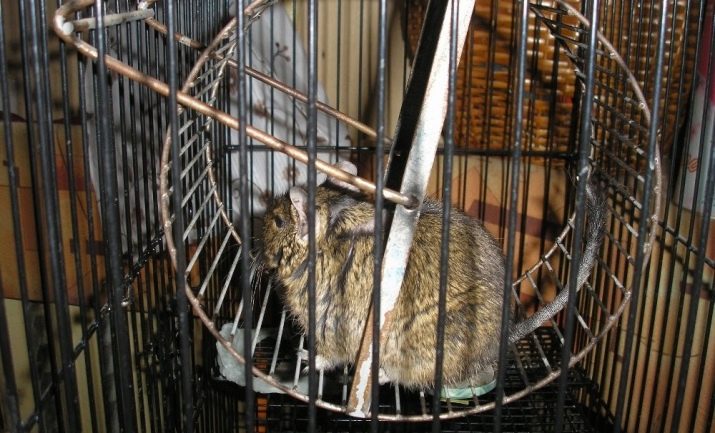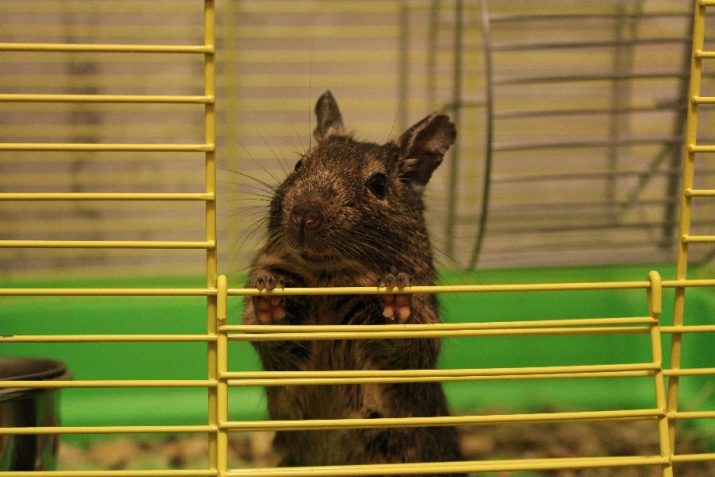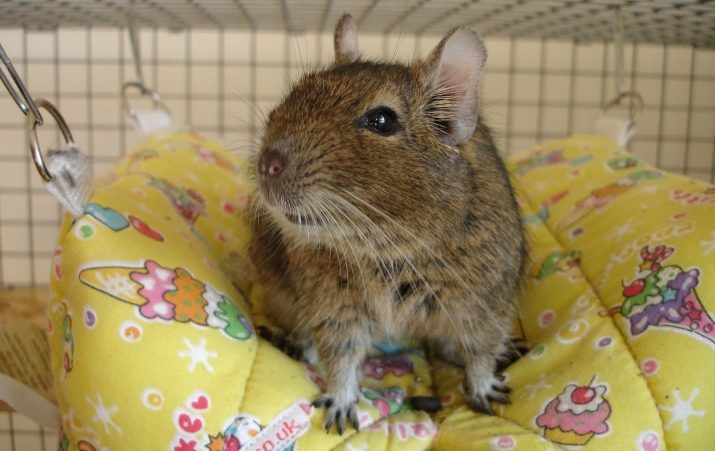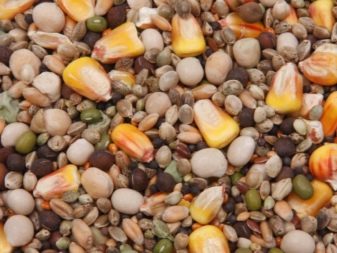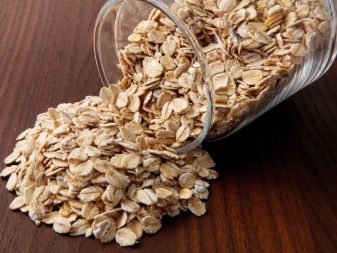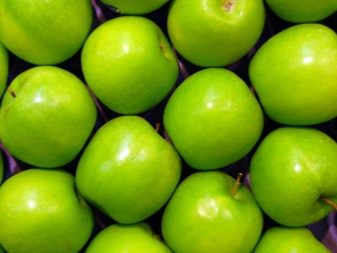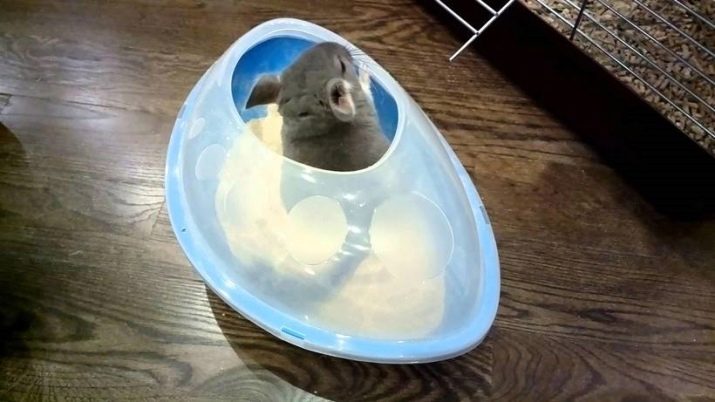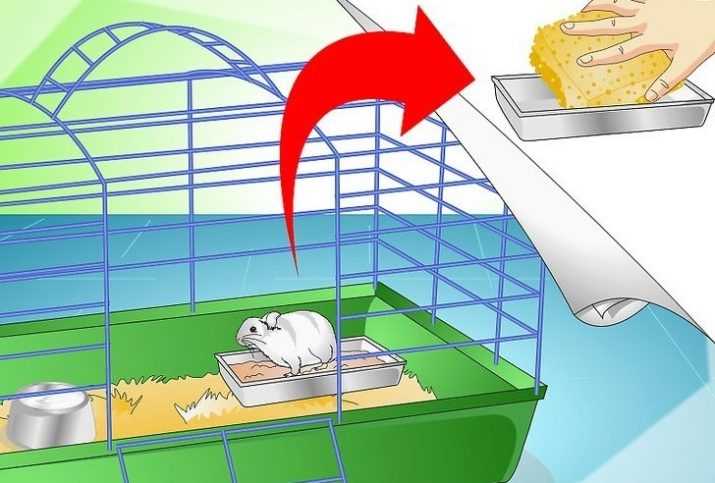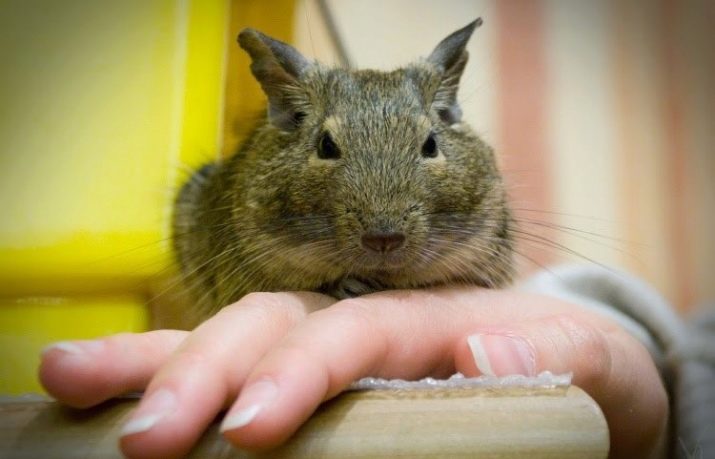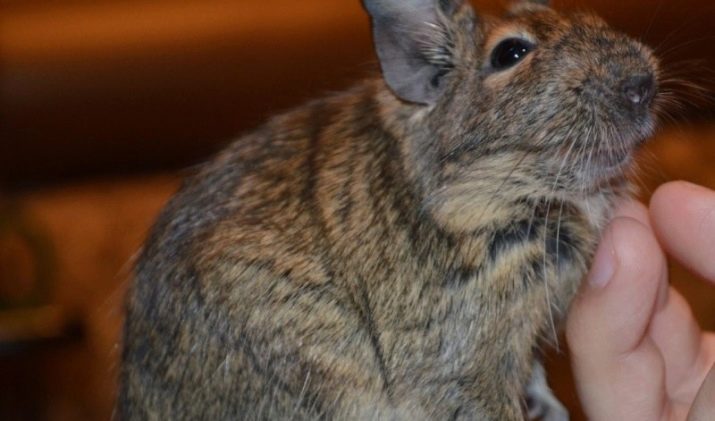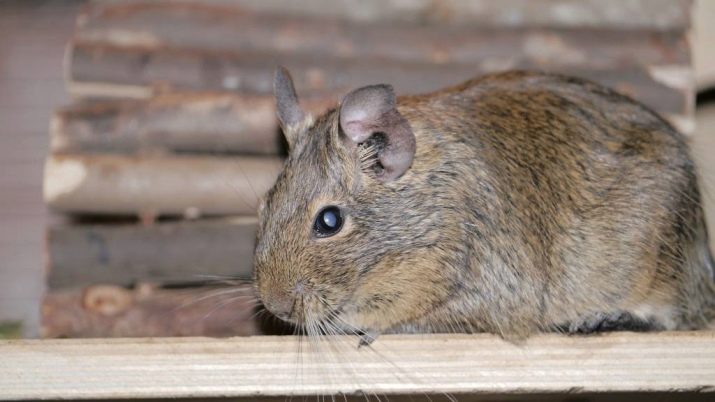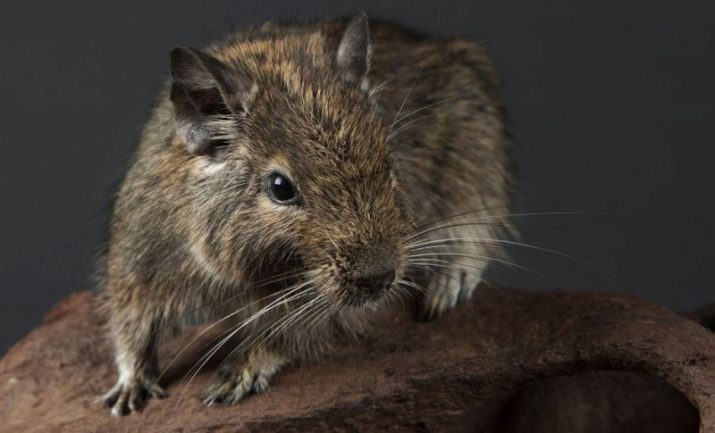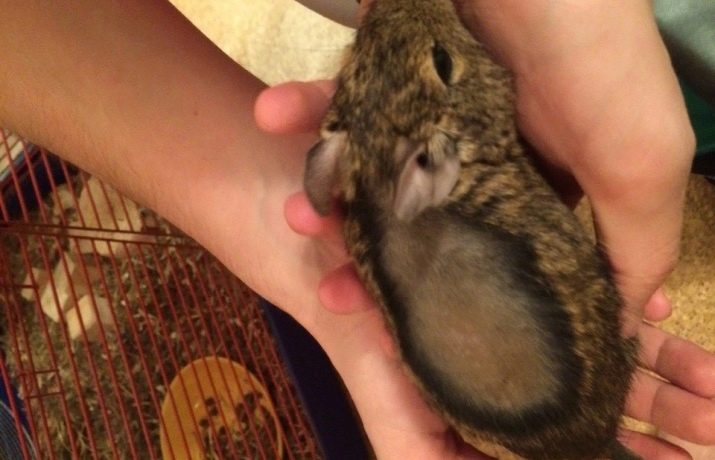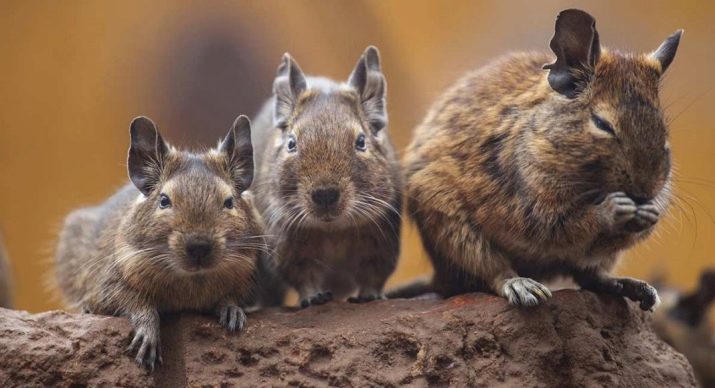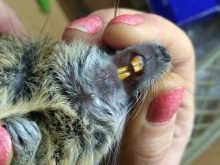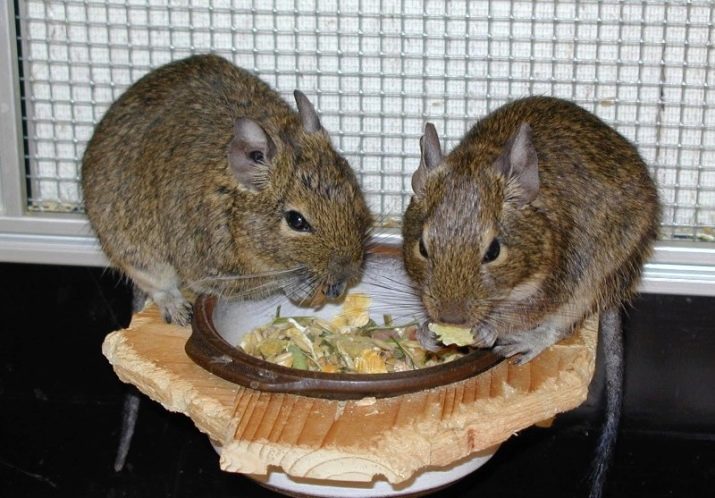The squirrel degu in Russia is contained exclusively in captivity. Outwardly, this amusing pet at the same time looks like a squirrel and a jerboa, it looks pretty cute, while the animal is unpretentious, does not require any special care and almost does not emit unpleasant odors.
Description and character
Decorative rat all its appearance, rather, resembles a hamster, jerboa or a large mouserather than a jumping inhabitant of parks, squares and forests, however, it can also be mistaken for an exotic chinchilla - the shape of the ears and the rather thick undercoat make this animal a degu. The animals have South American roots, so the people most often call it Chilean.
In nature, it lives in sandy, rocky and wooded areas near the Andes, along with its tribesmen, there are also Australian species. Bred captive ornamental rat very quickly gets used to his masters and all the time demands heightened attention.
These rodents are especially mobile in the daytime, but the heat of the day and direct sunlight are very badly tolerated.
In the natural habitat can be found grayish and yellowish-brown individuals, for home breeding breeders were bred several breeds with sand, black and spotted color, belly usually a little lighter than the back.
Characteristic features of degus:
- body length - 10-20 cm;
- elongated muzzle;
- ears rounded, long;
- tail reaches 105 mm, tassel at the tip;
- weight - about 500 g;
- coat short, thick, very soft.
If you grab the Chilean squirrel by the tail and pull it hard, then the skin will come off the “stocking” - this is a kind of protective mechanism that helps the animal escape from dangerous predators. Subsequently, the degu tears off the remains of the tail and lives without it.
The rodent is pretty bad at seeing, which is explained by the peculiarities of the structure and placement of the eyes, however, this is more than offset by a perfect sense of smell and good hearing. Under natural conditions, degus can orient themselves not only in the light, but also in the dark.
The person who decided to become the owner of this cute little animal, you need to know that the decorative squirrel is a very inquisitive animal that loves to mingle with its kindred. If you lead several rodents at once, the animals will always be in an exceptionally good mood, but if the rodent lives in your house alone, then be prepared for the fact that he will have to pay a lot of attention - to constantly stroke and often talk.
Thus you compensate for the lack of communication with their relatives. It would be useful to teach him to take food from your hands. If you leave him alone, the animal will begin to show aggression towards its breeders, in addition, often a nervous breakdown leads to a deterioration in the health of the squirrel.
Features of maintenance and care
When keeping a house at home, several important points should be considered.
Addiction to the cage
Despite the relatively small size of rodents, they need quite a lot of space for them. The fact is that squirrels are very mobile creatures, therefore for games and comfortable movement they need dimensional cells.
The minimum allowable size of the enclosure is 60x60x60 cm, but a cage with parameters 120x60x100 cm is considered ideal. It is desirable that the enclosure was made of stainless steel, all other materials are not suitable here, since the wood and plastic can simply gnaw the animal with their pointed teeth in just a few minutes.
Optimally arrange two or three levels inside, as well as create a compartment in each aviary for a night sleep and rest of the animal with a hammock, usually for this they acquire a small house. In the cage must certainly be a tray with sawdustBy the way, they themselves can cover the bottom of the cell. And if the chips or sawdust are not at hand, then they can be replaced with white sheets of plain paper or pressed corn cobs.
Chilean squirrels behave like children: they love to hide in all sorts of sheltersTherefore, be sure to consider the design of such places. Usually caring owners place small clay pots in a cage, snags or ornate branches - animals with great pleasure jump over them, and at the same time sharpen their teeth.
It is also advisable to build a couple of shelves that will surely attract the attention of this curious creature.
In their natural habitat, the degu are in constant motion. At home, they do not have the ability to move as intensely, because in the aviary usually put the wheel. Moving on it, the animals expend their energy and feel very comfortable. Be sure to put a few feeders for different types of food, and feeding.
After the purchase of this funny rodent, the first desire of any host becomes its prompt placement in a new habitat. However, this should not be done - the fact is that It takes some time for habituation and adaptation to new environmental factors. It is advisable to leave it for a short time in the carrying case, placing it near the cage.
Over time, the animal will get used to it and begin to behave more calmly in the new house, only after that it will be possible to take it out and move it into a spacious cage. This should be done with all care, in any case, do not cause unnecessary anxiety in the animal. Even before changing the place of residence, it is necessary to put part of the carrier in the cage - in this case, the degus will smell in a new place, and this will ease its condition and help to cope with strong emotion.
When the animal has mastered the aviary, it will need to be released from time to time for a walk. You should not allow him to freely roam around the house, a small enclosed area inside the dwelling is quite enough, however, keep in mind that this place should be freed from electrical wiring and sockets, glass objects, and also some indoor plants (for squirrels, callas, rhododendron and ivy).
Often, after a pleasant walk, the rodent does not feel a great desire to go back to the cage - then the cage should be placed next to it and leave the door open. As soon as the animal gets hungry, it will certainly return inside. If you do not have the opportunity to wait long, try to get his attention with a treat and defiantly put him inside the feeder, these manipulations are best accompanied with a low whistle. Rest assured, the squirrel will remember this sound and will inevitably react to it in the future, immediately approaching the trough in anticipation of the tasty one.
Diet
Chilean squirrels in the wild are herbivores, so their diet at home should be predominantly vegetable, but at the same time, full and diverse. Feed must include:
- grain mixture;
- ground crackers;
- dried green peas;
- oatmeal and other flakes.
In pet stores offer ready-made feed for rodents, as a rule, they contain mineral supplements and vitamins.
Be sure to include in the menu porridge, vegetables and seeds. Fruits are allowed, but they must be unsweetened (for example, green apples), otherwise your pet may develop diabetes. It is not recommended to include in the diet overripe fruits, as well as dried fruits.. A strict taboo lies on all types of dairy products, as well as meat and fish products, the use of leftovers from the table is unacceptable.
Hygiene
Many breeders will certainly appreciate the fact that Chilean squirrels do not need to be washed. These are very neat creatures that are do not need additional bathing. These cute little animals fully cope with self-care for themselves - for this you only need to put in a cage a small bath with river sand. Animals tumble in the sand, cleaning all sticking dust and dirt from the fur.
But the hygiene of the home of the animal should be given special attention. Every 2-3 days will have to change the litter, at least once every 10 days you need to wash the cage with warm water with a brush, certainly using household or antibacterial soap. At the end of the wash, wipe the tray dry, lay sheets of paper on it, and fill it with sawdust.
Schooling your hands
Degu are very sociable creatures, which quickly get used to human hands and begin to recognize their owner by smell. Considered uhthe most highly intelligent creatures among all rodent speciesYou can even teach these squirrels to respond to your name and teach simple commands. Each individual has its own individual temperament, but at the same time they all show vigor, activity and mobility.
Despite the fact that these exotic rodents are very cautious and rather shy, most often curiosity still gains the upper hand over them, and they are the first to take the initiative in trying to strike a relationship with their owner. However, any harsh word or loud sound can frighten them away.
Remember - the domestication of the degu should be gradual and slow.
To begin with, you should talk to him as often as possible, in an even gentle voice, constantly calling by name. Communication should be regular and accompanied by stroking. The first attempts to tame the rodent should be done carefully - it is necessary to stretch the arm with the back side down. It will take several weeks before the animal gets used to you and starts to happily meet while waiting for a treat.
Keep in mind that this animal does not tolerate familiarity, and if some person tries to make contact with him by force, the answer to such actions will be bites with rather sharp teeth. Believe me, they bite it hurts, and the feelings you will experience are not the most pleasant. For this reason, the degu can not be called a good choice of a pet for young children.
Offspring and sex determination
For a healthy and strong offspring, females from a year to five years old weighing more than 200 g are allowed to breed. light babies and make new ones. It is optimally that at least 1 year elapsed between the births, which is why the newly minted young mother is immediately deposited in a separate cell.
Pregnancy lasts about 3 months, and to understand that the emergence of new proteins is already close, only by the end of the first month of pregnancy. At this point, the animal is noticeably rounded, and all degu movements become clumsy and awkward.
Usually the female gives birth to 1 to 10 cubs, on average the number of babies in each litter is 4-8. Keep in mind that Home births at Degu usually take place quite difficult, often with severe complications, so the female needs the help of a specialist. It is advisable to contact the veterinary hospital, since there is a high probability of extreme cases when a cesarean section or other special manipulations, as well as injections, may be required.
Chilean squirrels are born with open eyes and thick hair. They develop quite rapidly and grow, therefore at six weeks they become independent and can easily be separated from the mother cell into their own, separate.
There are situations when the female dies during childbirth or shortly thereafter from complications - in this case, the breeder will have to take care of the newborn. It is necessary to feed the babies with a mixture for newborn kittens, which is sold in any zoooptek. Feeding is done every 2-2.5 hours using a syringe or a special bottle with a rubber tip. After each meal it is necessary to massage the belly of the cub.
The minimum feeding period is two to three weeks. In addition to the regular intake of the mixture, babies always need warmth and complete rest.
By the appearance of the kids, it is almost impossible to determine who it is - a boy or a girl, because Chilean squirrels completely lack sexual dimorphism. But it is still possible to distinguish them, for this it is worth seeing the rodents down the drain. If the distance between the anus and urethra is about the little finger, then most likely the male is in front of you, and if this area is almost invisible to the eye, you are dealing with a young female.
Possible diseases, their treatment and prevention
Nature took care of the Chilean squirrels, endowing them with a rather strong and resistant immunity. The list of pathologies to which these funny animals are subject is small, among them the most common are the following diseases.
Diabetes
It is a disease, the predisposition to which is laid in degus in the genes. Usually, the triggering factors are non-compliance with the rules of feeding, the inclusion in the diet of sweets, as well as milk and starch-containing substances. An excess of nuts is also not particularly useful for rodents. The first signs of diabetes - loss of coordination, reduction of vigor and deterioration of visual acuity.
Cure this disease is impossible. Usually the veterinarian only recommends that you stick to your diet and keep a constant monitoring of your blood glucose.
Cold
Frequent bathing in cool water, strong drafts and fluctuations in temperature - all this often causes a cold Degu. At this point, the animal nasal discharge appears, eyes begin to water, all this is usually accompanied by refusal to eat. In the fight against colds, experts usually recommend drinking plenty of water, rest and the introduction of vitamin supplements in the diet.
Baldness
Alopecia in ornamental rodents can occur for a variety of reasons: due to feeding errors, due to mechanical abrasion of wool, allergies, fungal skin pathologies. In most cases, with a properly defined cause of the disease, hair loss is treated quickly and without any unpleasant consequences.
Gastrointestinal Disorder
Each specialist will tell you that it is food that becomes one of the most important aspects of the life of a captive degu. Dietary imbalance and deviation from the prescribed diet cause problems with the digestive system.
Many breeders are turning to clinics asking them to vaccinate their pets. And it is in vain - Chilean proteins are not vaccinated, and there are two reasons for this:
- degu are not predisposed to all kinds of infectious and viral diseases;
- a vaccine that would be completely safe for ornamental rats until invented.
How many live?
In the wild degu live about 5-6 years. In captivity, when creating a comfortable habitat, this parameter is longer - up to 8-10 years. As a rule, life expectancy is directly dependent on compliance with hygienic requirements, physical activity and balanced diet.The longest life of a degu in a house was fixed at around 15 years.
What to look for when buying?
When purchasing a Chilean squirrel, first of all you need to pay attention to its appearance and the general condition of the animal. A healthy protein is as follows:
- eyes bright, shiny, clean cilia do not stick together;
- the teeth are yellowish, a pair of upper incisors are clearly distinguishable;
- hair smooth, shiny, hairs tight to the body;
- The behavior is quite active, but at the same time the animal is alert.
Owner reviews
The Chilean squirrel is a very interesting animal, the content of which in the home environment has a lot of advantages:
- the animal is miniature, so it does not need much space;
- degu eats much less than, for example, guinea pig;
- the biological rhythms of the rodent completely coincide with the human ones.
And, of course, this is a very interesting animal, which is guaranteed not to bore children, and adults too.
However, with all the virtues, the degu is still an exotic animal and, despite the fact that this pet was brought to Russia many generations ago, it still comes from warm countries with a hot humid climate. therefore, the decor in your home will require some features.
- The need for sand baths. Chilean squirrels love to swim in the sand, scattering it on the aviary, so if you are determined to have such a pet, be ready for cleaning near the cage.
- Sharpening incisors. Degu have 8 pairs, growing teeth need periodic warm-up. If you do not provide the squirrel with suitable materials, the animal will gnaw everything that gets “under his teeth” - furniture, toys and much more.
- Daegu is experiencing a truly physiological need for communication. If the pet feels lonely, it loses activity, begins to wither and may even die.
Having decided to start a degu, be sure to weigh the pros and cons of keeping it in your home. Providing him with comfortable living conditions, you will surely find an amusing faithful friend.
See 10 video myths below.
